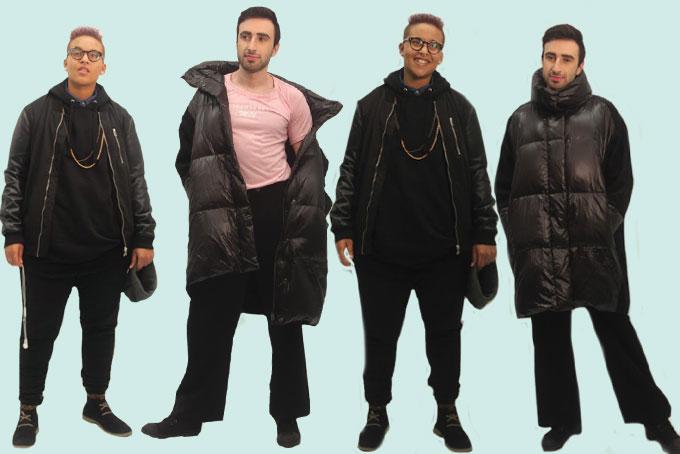By Sidney Drmay
While gender-neutral fashion is becoming more popular in trends like unisex button-downs and baggy, shapeless shirts, for queer and transgender people it’s a tool used for resistance and protection. Fashion is a way for them to express their sexuality and gender through clothing and accessories that aren’t readily available in mainstream lines.
Recently, H&M released its latest ad campaign that focuses on ‘feminist’ themes, with queer undertones such as trans models and two girls kissing at the end of the commercial. It was hailed as being empowering by Cosmopolitan and Huffington Post wrote that the ad was “redefining what being ladylike is.” Yet, many saw through the campaign because of the company’s lack of commitment to women and trans folks, despite the use of queer imagery. The brand still operates under gender-segregated sections within its stores and features “boyfriend” style jeans as a type of denim fit.
Queer fashion writer Arabelle Sicardi understands the importance of queer and trans fashion at its very core: it’s not about pretty, it’s about survival. LGBTQIA people are constantly at risk of experiencing violence rooted in homophobia and transphobia and fashion becomes a way to cope, resist and protect.
Chrys Saget-Richard is a third-year social work student who is nonbinary trans and describes their style as “femme boi who likes to wear a lot of black.”
“What I decide to wear is like my armour, I know I’m gonna have to face a lot of trash everywhere I go but when I look good it’s okay,”
Saget-Richard said. “There’s nothing I do that doesn’t have a protective layer to it.”
But with the added vulnerabilities of being a marginalized gender and sexuality, sense of style as armour is critical. Especially for racialized people like Saget-Richard, who has also deal with racism in public spaces.
“People don’t understand a Black aesthetic but I definitely have a Black aesthetic. It affirms my Blackness but also challenges you, because I don’t mind that I scare people, I understand that all of my identities as they intersect are feared,” Saget-Richard said.
This relates to Saget-Richard’s understanding of their personal style.
“I love having facial piercings and colourful hair. Fucking with people’s respectability politics because fuck respectability politics,” Saget-Richard said. “Realistically, nothing about me is respectability. I’m a Black, I’m nonbinary, I’m queer, so even when dressed ‘clean’ I still have a queer edge and I live for that shit,”
Looking to queer and trans histories, fashion has been a tool of resistance for generations—whether it’s an ‘IMRU?’ t-shirt (a play-on acronym for the “I am, are you?” phrase, stemming from gay pride) or a bunch of buttons on a jean vest. LGBTQIA people use it to find community. Spotting a patch with a genderqueer symbol in a crowd can provide a sense of safety. It allows people to find each other in what could be an unsafe situation.
Saget-Richard explained that queer style is more than just short haircuts. Finding people that look like them in a community is a very important attribute closely associated with their style.
Rob Molloy, a first-year politics and governance student, developed sense of style as “preppy person at a picnic with their family”.
“[I like wearing] dress shirts and bow ties but I also have days where I like to be really androgynous. I love to paint my nails, which is seen as very non-masculine. When I’m in a full suit but my nails are pink, I love that,” Molloy said.
Transgender people use fashion to present aspects of femininity and masculinity to resist gender classification and fight binarism.
Molloy finds himself blending the ideas of gendered fashion in order to express his understanding of gender identity.
“The whole male or female thing in stores is weird, I’ve shopped all over and it’s the worst to be forced into the gender binary and have to fit everything all together to be comfortable,” Molloy said. “It’s annoying to sit and puzzle piece things together.”
With queer and trans fashion becoming more mainstream, the LGBTQIA community does what they can to keep their style their own. Saget-Richard believes that queer fashion cannot ever fully be taken by the mainstream because it is intrinsically connected to identity.
“We’re just so fuckin’ cute. The mainstream is like ‘I wanna be edgy’. If you’re not queer you can’t take a queer aesthetic. It’s not yours, why would you take it?” Saget-Richard said.











Leave a Reply